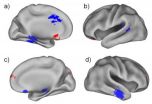(Press-News.org) WASHINGTON — The rapid advances in information technology that drive many sectors of the U.S. economy could stall unless the nation aggressively pursues fundamental research and development of parallel computing -- hardware and software that enable multiple computing activities to process simultaneously, says a new report by the National Research Council. Better options for managing power consumption in computers will also be essential for continued improvements in IT performance.
For many decades, advances in single-processor, sequential computer microprocessors have enabled computing performance to increase dramatically -- on the order of 10,000 times in the last 20 years alone. However, power management and other technological limitations have made it impractical to continue improving computer performance in this way much longer. Parallel computing, therefore, is the only known alternative for improving computer performance without significantly increasing costs and energy usage, the report says.
"The societal and economic impact of computer technology is undeniable, increasing productivity and efficiency and fostering innovation in medicine, defense, entertainment, and communications," said Samuel H. Fuller, chief technology officer and vice president of research and development for Analog Devices Inc., Norwood, Mass., and chair of the committee that wrote the report. "To ensure that computing systems continue to double in performance every few years, we need to make significant changes in computer software and hardware. Investing in research and development of parallel computing offers a clear path forward."
Despite some mainstream successes in parallel computing -- such as the MapReduce programming framework used by Google to process large data sets using thousands of computers -- most parallel computing in use now is limited to comparatively narrow scientific and engineering applications. To enable parallel computing for broader use, new algorithms, programming models, operating systems, and computer architectures will be required, the report says, and research and development in these areas should be pursued.
In particular, advances are necessary to develop new parallel programming methods and supporting computing systems. Although computing hardware such as semiconductor chips that contain eight or more microprocessors have already been developed, software that can keep that many or more processors busy in parallel is not available for most computing applications.
Research and development should also focus on making computer systems more energy efficient, the report says. Power constraints now affect systems ranging from handheld devices to the largest computing data centers. Most computer chips are designed with silicon-based complementary metal oxide semiconductor (CMOS) technology. While the number of devices per CMOS chip continues to double every few years, the technology has essentially reached its limits with regard to power efficiency. Even as new parallel computing models and solutions are found, most future performance will ultimately be limited by energy constraints, the report notes.
It cautions that while parallel computing is the best alternative for improving future performance, there is no guarantee that it will bring rapid advances like those experienced in recent decades, and a number of uncertainties still need to be addressed. Therefore, research and development should also explore fundamentally different alternatives to today's CMOS technology.
The report also recommends developing open interface standards for parallel programming to promote cooperation and innovation in the industry, designing tools and methods for transferring today's sequential computing to parallel applications, and emphasizing parallel computing as part of computer science education.
INFORMATION:
The study was sponsored by the National Science Foundation. The National Academy of Sciences, National Academy of Engineering, Institute of Medicine, and National Research Council make up the National Academies. They are private, nonprofit institutions that provide science, technology, and health policy advice under a congressional charter. The Research Council is the principal operating agency of the National Academy of Sciences and the National Academy of Engineering. For more information, visit http://national-academies.org. A committee roster follows.
Contacts:
Molly Galvin, Media Relations Officer
Christopher White, Media Relations Assistant
Office of News and Public Information
202-334-2138; e-mail news@nas.edu
Pre-publication copies of The Future of Computing Performance: Game Over or Next Level? are available from the National Academies Press; tel. 202-334-3313 or 1-800-624-6242 or on the Internet at http://www.nap.edu. Reporters may obtain a copy from the Office of News and Public Information (contacts listed above).
NATIONAL RESEARCH COUNCIL
Division on Engineering and Physical Sciences
Computer Science and Telecommunications Board
Committee on Sustaining Growth in Computing Performance
Samuel H. Fuller (chair)*
Chief Technology Officer, and
Vice President of Research and Development
Analog Devices Inc.
Norwood, Mass.
Luiz Andre Barroso
Distinguished Engineer
Google Inc.
Mountain View, Calif.
Robert P. Colwell*
Independent Consultant
R&E Colwell and Associates
Portland, Ore.
William J. Dally*
Chief Scientist
NVIDIA, and
Willard R. and Inez Kerr Bell Professor of Computer Science and Electrical Engineering
Computer Science Department
Stanford University
Stanford, Calif.
Daniel W. Dobberpuhl*
Independent Consultant
Monterey, Calif.
Pradeep Dubey
Senior Principal Engineer and Director of Parallel Computing Lab
Intel Labs
Intel Corp.
Santa Clara, Calif.
Mark D. Hill
Professor
Computer Sciences Department
Electrical and Computer Engineering Department
University of Wisconsin
Madison
Mark A. Horowitz*
Chair and Yahoo! Founders Professor
Department of Electrical Engineering
Stanford University
Stanford, Calif.
David B. Kirk*
Fellow
NVIDIA
Santa Clara, Calif.
Monica S. Lam
Professor of Computer Science
Stanford University
Stanford, Calif.
Kathryn S. McKinley
Endowed Professor of Computer Science
University of Texas
Austin
Charles Moore
Corporate Fellow and Chief Technology Officer for Technology Group
Advanced Micro Devices Inc.
Sunnyvale, Calif.
Katherine A. Yelick
Professor
Department of Electrical Engineering and Computer Sciences
University of California, and
Associate Laboratory Director for Computing Sciences
Lawrence Berkeley National Laboratory
Berkeley
STAFF
Lynette I. Millett
Study Director and Senior Program Officer
* Member, National Academy of Engineering
Information technology needs fundamental shift to continue rapid advances in computing and help drive US competitiveness
2010-12-17
ELSE PRESS RELEASES FROM THIS DATE:
URI geologist develops improved seismic model for monitoring nuclear explosions in Middle East
2010-12-17
KINGSTON, R.I. – December 16, 2010 – Geologists from the University of Rhode Island and Princeton University, in collaboration with Lawrence Livermore National Laboratory, have taken an important step toward helping the United States government monitor nuclear explosions by improving a 3-dimensional model originally developed at Harvard University. The improvements make the model more accurate at detecting the location, source and depth of seismic activity.
The results of their research were presented today at a meeting of the American Geophysical Union in San Francisco.
The ...
Flu on the western front
2010-12-17
The World Health Organization set a target for the influenza vaccination rate for 2006 of more than 50% of the elderly population and an increase to more than 75% by 2010. These rates have thus far not been achieved in the old German states. In the current issue of Deutsches Ärzteblatt International (Dtsch Arztebl Int 2010; 107[48]: 845) the working group around Annicka M. Reuss presents rates from flu seasons past.
Germany's Standing Vaccination Committee (STIKO) recommends annual vaccinations against seasonal influenza. The risk groups for the infection, which ...
New study suggests almonds may help reduce risk of type 2 diabetes and heart disease
2010-12-17
Modesto, CA (Dec. 16, 2010) – With nearly 16 million Americans living today with prediabetes, a condition that is the precursor to type 2 diabetes, and half of all Americans expected to have either prediabetes or type 2 diabetes by the year 2020, nutritional approaches to maintaining healthy blood sugar levels are essential.1,2 The findings of a scientific study examining the health promotion and disease prevention benefits of almond consumption were published in the June, 2010 Journal of the American College of Nutrition. The study, one of the first of its kind to quantify ...
Decades after childhood radiation, thyroid cancer a concern
2010-12-17
When children are exposed to head and neck radiation, whether due to cancer treatment or multiple diagnostic CT scans, the result is an increased risk of thyroid cancer for the next 58 years or longer, according to University of Rochester Medical Center research.
The study is believed to be the longest of any group of children exposed to medical irradiation and followed for thyroid cancer incidence. It was published in the December 2010 edition of the journal, Radiation Research.
The data also might provide some insight about why the rates of thyroid cancer continue ...
Wind turbines may benefit crops
2010-12-17
AMES, Iowa – Wind turbines in Midwestern farm fields may be doing more than churning out electricity. The giant turbine blades that generate renewable energy might also help corn and soybean crops stay cooler and dryer, help them fend off fungal infestations and improve their ability to extract growth-enhancing carbon dioxide [CO2] from the air and soil.
Speaking at the annual meeting of the American Geophysical Union, a scientific society, in San Francisco today, a researcher at the U.S. Department of Energy's Ames Laboratory and his co-researcher from the University ...
Teacher effort is linked to difficult students' inherited traits
2010-12-17
Challenging students take up more of their teachers' time—and the difference between a tougher student and an easier one appears to be genetic, according to a new study published in Psychological Science, a journal of the Association for Psychological Science. The study looked at young twins in the U.K. and asked their teachers how much of a handful they are.
"Policy-wise, there's a lot going on, blaming teachers for what's going on in the classrooms," says Renate Houts of Duke University, who cowrote the study with Avshalom Caspi and Terrie E. Moffitt of Duke, Robert ...
MRI scans reveal brain changes in people at genetic risk for Alzheimer's
2010-12-17
AUDIO:
People with a known risk for Alzheimer’s disease seem to develop abnormal brain function even before the appearance of amyloid plaques in the brain. A new study from Washington University...
Click here for more information.
People with a known, high risk for Alzheimer's disease develop abnormal brain function even before the appearance of telltale amyloid plaques that are characteristic of the disease, according to a new study.
Researchers at Washington University ...
New report outlines restoration activities to speed seagrass recovery in the Florida Keys
2010-12-17
Results of a five-year monitoring effort to repair seagrass damaged in a boat grounding incident suggest that restoration techniques such as replanting seagrass can speed recovery time. The finding is included in a new report released today by NOAA's Office of National Marine Sanctuaries.
The National Marine Sanctuaries Conservation Series report, "N-Control Seagrass Restoration Monitoring Report Monitoring Events 2003-2008," presents results of efforts to repair a nearly 1,000-square-foot (92.8-square-meter) swath of seagrass that was damaged on May 29, 2001, when a ...
Tiny 3-D images shed light on origin of Earth's core
2010-12-17
To answer the big questions, it often helps to look at the smallest details. That is the approach Stanford mineral physicist Wendy Mao is taking to understanding a major event in Earth's inner history. Using a new technique to scrutinize how minute amounts of iron and silicate minerals interact at ultra-high pressures and temperatures, she is gaining insight into the biggest transformation Earth has ever undergone – the separation of its rocky mantle from its iron-rich core approximately 4.5 billion years ago.
The technique, called high-pressure nanoscale X-ray computed ...
Extinctions, loss of habitat harm evolutionary diversity
2010-12-17
A mathematically driven evolutionary snapshot of woody plants in four similar climates around the world has given scientists a fresh perspective on genetic diversity and threats posed by both extinctions and loss of habitat.
The message from the study, appearing online ahead of publication in Ecology Letters, says lead author Hélène Morlon, is that evolutionary diversity -- the millions of years of evolutionary innovations contained in present-day species -- is more sensitive to extinctions or loss of habitat than long thought. And that, she adds, means conservation efforts ...

